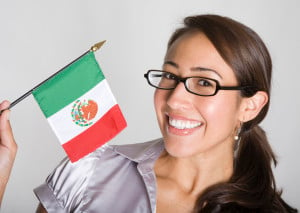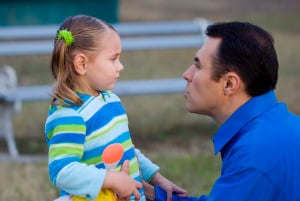Originally published on The Huffington Post and republished here with permission.
I recently came across a flier in an old backpack of my daughter’s: Wanted: Committee Chairs for this Spring’s Cinco de Mayo All School Celebration. The flier was replete with cultural props including a sombrero, cactus tree, donkey, taco, maracas, and chili peppers.
Seeing this again brought back the moment when, years earlier, my daughter had handed the flier to me, and I’d thought, “Oh, no.” The local K-6 elementary school’s Parent Teacher Student Association (PTSA) was sponsoring a stereotypical Mexican American event. There were no Chicanx students, parents, or staff members who I was aware of in the school community, and I was concerned about the event’s authenticity.
I presumed the PTSA meant well, and was attempting to provide a multicultural experience for students and families, but it seemed they were likely to get it wrong.
After making some inquiries, I was told the school wanted to celebrate Cinco de Mayo because it was Mexico’s Independence Day. However, Cinco de Mayo is actually Battle of Puebla Day, commemorating the defeat of Napoleon III in 1862. Mexico’s Independence Day is September 16th.
I wrote the school and asked if they might consider canceling the event. I was concerned that the stereotypes associated with Chicanxs, such as fast-food items, piñatas, sombreros, and serapes would be central to the event.
Unfortunately, I was correct.
The Reality of Cinco de Mayo
Cinco de Mayo has been celebrated in the United States more than in Mexico. Celebrations in the state of Puebla (100 miles east of Mexico City) are common, but are fairly uncommon in the rest of the country.
Many Puebla residents are conversant about the 1862 battle and how naval forces from Great Britain, Spain, and France traveled to Mexico to negotiate various financial debts. Spain and England settled their conflicts and left quickly, but France decided to fight, believing they would be the easy victors and could establish a French colony in Mexico.
Mexican soldiers, greatly outnumbered and poorly armed, prevailed. The battle is a source of pride for many Mexicans, but not necessarily a major national holiday.
During the 1960s Civil Rights Movement, activists incorporated Chicanx interests by strengthening cultural ties between Mexico and the United States. The United States had historically looked favorably upon the Battle of Puebla because, in 1862, US leaders feared having France at its backdoor during the US Civil War.
Thus, more than 100 years later, Cinco de Mayo was readily embraced as a new U.S.-Mexican holiday.
Unfortunately, the holiday has been commercialized by the food and liquor industry. And in the United States, Cinco de Mayo (similar to St. Patrick’s Day) has become an excuse to imbibe spirits and help Corona and Dos Equis beer companies improve their market share.
Bars offer half-priced margaritas, and Tex-Mex fast-food chains see an increase in sales while sombreros and piñatas fly off the shelves of big-box party supply stores.
Chicanx youth are exposed to strong alcohol marketing campaigns with damaging stereotypes. Some groups have resisted, sponsoring Cinco de Mayo con Orgullo (Cinco de Mayo with Pride) celebrations. These nonalcoholic events focus on heritage and empowerment, rather than on Mexican hat dances and drinking games.
Cartoon Characters and Other Stereotypes
The PTSA sent a Cinco de Mayo flier home asking for parent help with the celebration. They wanted to borrow coloring books, and kids’ picture books with a Mexican/Latin American theme. Some books to look for might be ones with characters such as Speedy Gonzalez, Yosemite Sam, Road Runner, they suggested.
I learned they wanted the books to put on overhead projectors so they could trace the images on wide butcher paper taped to the walls of the school’s main entrance. They would then have students color in the images with markers to create Cinco de Mayo murals.
I spoke with a school administrator and talked about Speedy Gonzalez, the Warner Brothers’ Looney Tunes cartoon mouse. I recalled the “andale” (go on) and “arriba” (up) phrases he often spoke. Speedy, the “fastest mouse in Mexico,” played tricks on Sylvester the Cat, getting him to eat large quantities of hot sauce. He referred to the cat as “El Gringo Pussygato.” Speedy’s cousin, the gun-carrying Slowpoke Rodriguez, was the “slowest mouse in Mexico.” Slowpoke and Speedy’s other cousins were shiftless and lazy and frequently appeared inebriated.
Although the committee wanted “Mexican” themes, I felt these represented offensive stereotypes.
I was also perplexed about others on the list, such as Yosemite Sam, the large mustachioed gun-toting prospector in Bugs Bunny cartoons and the Roadrunner of Wile E. Coyote fame. I was told these two characters lived in the desert and that Mexican Americans live in the desert.
I sent documents to the school indicating that more than 90% of Chicanxs live in cities and towns, but the celebration proceeded as planned.
The week before the event, I received a phone call from the PTSA coordinator. They wanted my help, and I was elated. My joy, however, soon turned to disappointment: She wanted to know if I knew anyone who could “do the Mexican hat dance.”
I’m not kidding.
And no. I did not.
The Reaction of Chicanx Students
I shared this story a few years later in my teacher education course. A woman identified herself as a native of Mexico and said she had many questions about how her culture was portrayed in the media and within schools.
Rosa was surprised at how Cinco de Mayo was represented as a drinking holiday. She was disturbed about how schools reinforced stereotypes about Mexicans wearing sombreros, being lazy, and sleeping under cactus trees.
The class enjoyed Rosa’s sense of humor and openness and had many questions. She said she would answer their questions if they answered hers.
Of course, I wanted to avoid treating Rosa as a “native informant,” or expecting her to speak for an entire culture, but I also wanted to honor Rosa’s curiosity and was eager to see where this conversation might lead.
Rosa’s first question was “What is a burrito?” She said she went to a restaurant and saw this on the menu. She did not select the burrito because she didn’t know what it was. The students found it amusing that they were describing a burrito to someone who grew up in Mexico.
I asked the class to do some research. Students found that the typical large, overstuffed burrito, including the breakfast burrito, is a US creation – and that the smaller meat and vegetable burritos are popular in northern Mexico. Rosa is from Mexico City, in central Mexico, which explains why she didn’t know what it was.
A colleague of mine from Puerto Rico said, “And tell your students food stereotypes are a big deal. I can’t tell you how many times I have been asked if I miss tacos from home. We did not eat tacos!”
The students asked Rosa if there were piñatas at the parties she attended. She said they were rare and typically not in the shape of donkeys. She told us that Catholic missionaries introduced them to Mexico in the 16th century, as part of a conversion process for Lent; they were either a seven- or nine-point star or heavily decorated clay pots. The vessels were filled with trinkets, food, or jewelry and when tied to Christianity, represented deadly sins.
Students asked Rosa what she wore to school. She laughed and said she did not wear white dresses with red flowers across the bodice, similar to what tourists buy from street vendors. She wore the same clothing and probably had similar academic and social experiences as students in my class.
The students began to see how inaccurate the US media can be. Rosa helped them understand that Mexico has a tremendous diversity of languages, dialects, culture, and politics, as well as rural and urban differences. She also pointed out that Mexican American culture has the same complexities.
Rosa then asked how many of the students had participated in a Dia de los Muertos (Day of the Dead) celebration. Every student in the class who had taken a Spanish language course in secondary high had done so. However, no one could accurately describe what the event was about. They remembered sugar skulls, altars, and “something about death.”
Rosa explained that death in her culture is not felt to be morbid as it is in the United States. Dia de los Muertos, on November second, is a day to honor adults who have died. Stories are told, grievances settled, and music is performed in homes or cemeteries, depending on the region and how religious or traditional a family might be.
Because of the racial and ethnic composition of the class, few had a concept of death outside a European American perspective. Rosa helped the class understand that these celebrations in a Spanish class offer little more than a chance to have a party and eat sugar skulls.
She explained that if one is part of the culture and Dia de los Muertos is tied to other cultural norms and practices, the celebration has deep meaning. Without it, the event perpetuates the idea that Chicanxs are exotic, strange, and have “parties in cemeteries.”
Alberto, an older Chicano student, asked if he could add to our analysis. With his characteristic wit, he said, “I don’t know how to do the Mexican hat dance. No one in my family does the Mexican hat dance. Why does everybody want us to do the Mexican hat dance?”
Coming from a farm labor family, Alberto was sensitive to issues of unfair and dangerous labor practices. He supported the United Farm Workers (UFW) and brought César Chávez to campus in 1993 to speak about the national table grape boycott. He observed that many people in this country are more familiar with Speedy Gonzales than Chavez or UFW co-founder Dolores Huerta.
The Necessity of Designing an Anti-Oppression Curriculum
As a class project, I had my teacher education students define the difference between the tourist approach to multicultural education and an anti-oppression approach. I assigned a variety of articles on the salient differences.
The students designed two curriculum plans on Chicanx issues that illustrated the different approaches, including learning objectives and course outlines. They first created a weeklong curriculum that incorporated inaccurate characterizations of Chicanx culture and history, emphasizing dance, food, and festivals, and designed fliers with cultural props for a hypothetical school celebration.
In a follow-up discussion, students realized that this approach felt familiar; it’s the easy approach to multicultural education taken by many schools.
The anti-oppression curriculum included Chicanx speakers discussing issues of discrimination they personally faced, as well as research papers using the UFW website and other online resources. Films such as Walkout, about the 1968 student demonstrations for better schools in Los Angeles, were included.
As a capstone experience, I asked students to examine textbooks, workbooks, and children’s picture books for stereotypical Chicanx images. They wrote letters to the editor based on their research, explaining why these materials represented false characterizations. The letters included suggestions for improvement. The students sent the letters to the actual companies and received thoughtful responses from authors and editors committing to making changes in future editions.
Some students asked if they could look at current and past marketing techniques of fast-food restaurants such as Taco Bell’s Chihuahua demanding more tacos (Yo quiero Taco Bell) and Taco John’s “Whiplash,” the sombrero-wearing monkey, and write letters to these companies.
They also wrote letters to Oriental Trading, a mail-order catalog that offers more than 100 items for Mexican “fiestas.” A photograph in the catalog features a man in a serape holding a gun. In addition, some students visited Halloween supply stores to examine costumes. The class favorite was the Sexy Shooter, a sombrero-wearing, scantily clad barmaid.
A flier for a Spanish language class on my campus currently hangs in several hallways in my building. Images of Chicanx stereotypes create the border for the flier. The investigative possibilities for students are endless.
Attempting to Get It Right
As anti-oppression multicultural education becomes better defined, we will be more successful in changing our students’ lives.
We need more contemporary and complex portrayals of cultures, and one way to assure this is to include people from these cultures in leadership roles on planning committees.
In addition, cultural events should take place only in conjunction with a strong, authentic, school-wide curriculum that addresses issues of discrimination and school change.
Teachers, administrators, and parents will get it right through sensitive questions, research, community involvement, friendship – and humility.
[do_widget id=’text-101′]
Sudie Hofmann is a professor in the Department of Human Relations and Multicultural Education at St. Cloud State University in Minnesota. She has also written “Time to Tell the Truth About Slavery at Mount Vernon“ for the Zinn Education Project. This article is part of the Zinn Education Project’s If We Knew Our History Series. Learn more about the Zinn Education Project and how you can help bring people’s history to the classroom.
Search our 3000+ articles!
Read our articles about:
Our online racial justice training
Used by hundreds of universities, non-profits, and businesses.
Click to learn more
Most Read Articles
- « Previous
- 1
- …
- 30
- 31
- 32




















